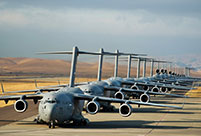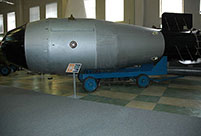 Lingerie show at 2014 Miss China
Lingerie show at 2014 Miss China
 Fan Bingbing's "Queen style" in new play
Fan Bingbing's "Queen style" in new play
 Top 10 pricey destinations for studying abroad
Top 10 pricey destinations for studying abroad
 Couple chase tornados to create perfect storm photos
Couple chase tornados to create perfect storm photos
 J-10 fighters show aerobatic stunts in smog-free sky
J-10 fighters show aerobatic stunts in smog-free sky
 Top 10 charming female soldiers of the PLA
Top 10 charming female soldiers of the PLA
 Charming contestants of Shanghai Int’l Model Contest
Charming contestants of Shanghai Int’l Model Contest
 Most amazing chi-pao beauties
Most amazing chi-pao beauties
 7 deadly animal attacks
7 deadly animal attacks
 Picturesque autumn scenery of Hongshan Army Horse Ranch
Picturesque autumn scenery of Hongshan Army Horse Ranch
CHENGDU, Oct. 25 -- Before Huang Jing, 20, started training to be a military truck driver last year, he thought that driving the Sichuan-Tibet highway would be "no big deal".
"I was quite confident at the beginning, because I already had the driving skills, and I come from Guizhou Province which is similar terrain to that along the highway," Huang said. "But when I began hauling supplies along that highway, the further I went, the less confident I became. I just felt like that I couldn't drive anymore."
The highway which intimidated Huang was opened to traffic on Dec. 25, 1954. Together with Qinghai-Tibet Highway, they ended Tibet's reliance on men, horses and ropes to transport goods.
At an average elevation of 3,500 meters, the 3,176 kilometers of road cross 14 rivers and 21 mountains with average height of 4,000 meters. Over 80 percent of the highway runs along steep hills or cliffs. Considered something of a miracle in the history of road building, the highway is still one of the most dangerous roads in the world prone to countless landslide, flood and avalanches.
Drivers from the Sichuan-Tibet transportation division of the People's Liberation Army's Chengdu military area command shuttle between the two regions several times a year to transport necessities such as petrol to mountain-locked Tibet.
Huang Xiaoqiang, commander of the division, said new drivers are assigned to a dedicated transportation unit and can become fully qualified for the route after a minimum of five round trips on high elevation assignments along the route.
"The whole process usually takes at least a year," he said. This is Huang Jing's second year in the army and he is now about halfway there.
Huang is on his division's last assignment in Tibet this year which began on Oct. 14. It is his 12th trip and he longs to become a qualified tanker driver, though he is still cautious.
"I drove cars previously and didn't know trucks well. Driving a tanker is fairly dangerous, so it's better to get more experience," Huang said.
Yuan Zhongyi, 22, of the same battalion, realized his dream of "going solo" in the tanker earlier this month. Yuan chose to become a military truck driver because nearly all his friends were learning to drive.
Yuan's mentor Zhang Longkan is proud of him, as he is a fast learner. "Yuan is my latest apprentice, and he completed his apprenticeship fastest."
LUCKY GENERATION
Young drivers like Yuan, and even his mentor Zhang who has been driver for nine years, are a lucky generation compared to their predecessors. Their life expectancy is much higher.
This year is the 60th anniversary of the completion of the highway. Though army drivers still have work with a lack of oxygen and the possibility of landslides, avalanches and mudslides, no death from a traffic accident has been reported in the past ten years, while thousands of military vehicles have plied the highway.
In the fifty years before, more than 600 drivers were killed doing their duty, roughly one each month. Thousands of soldiers were injured or incapacitated for life.
The cruelty of the Sichuan-Tibet is just a legend for young soldiers like Yuan and Huang, but Li Xiaogang, behind the wheel of army trucks for 17 years, has actually witnessed some of the dramatic changes.
Previously, only about 20 percent of the route was metalled. The rest was gravel or dirt, usually on a fairly steep slope. About 98 percent of the highway is tarred now.
"It used to take at least 40 days, sometimes two to three months, to make a round trip, trudging through from Chengdu to Lhasa. Nowadays, it only takes about 20 days," Li said. "The highway used to be so rough that I could blow 30 tires in a single mission."
Better equipment has also contributed to safer missions in the past ten years. At the very beginning, trucks used were the Dodge T234, seized during the War of Liberation (1946-1949) from defeated Kuomintang forces.They were replaced in 1970 by the Liberation CA10B in 1970, an entirely home-grown vehicle. Then came the Dongfeng EQ1092 in 1991, and the STR series, currently in service.
Veterans like Li and Zhang are valuable assets to the unit, helping train new drivers. With most drivers now born in the 1990s, Zhai Fengzhu, political commissar of the division, admits he has a new problem to deal with.
"The sources of recruits are more diverse now," Zhai said. There are college undergraduates and graduates, junior high and senior high school graduates, and those who joined the army after being migrant workers for several years.
"We've encountered new problems in terms of honing their ideology and inspiring them," he said. Compared with the veterans, people born in the 1990s are less obedient and ask many "whys".
"We have to talk to them honestly and move them with true feeling," said Zhai. "Once we explain clearly, the enthusiasm which grows could surmount that born out of mere obedience."
 U.S. air force transport planes row up on base
U.S. air force transport planes row up on base Fast and Furious: Post-85s female pilots and their mission
Fast and Furious: Post-85s female pilots and their mission Century-old public bath closes door in Beijing
Century-old public bath closes door in Beijing Shocking! Photos of Chinese fighters revealed
Shocking! Photos of Chinese fighters revealed World's most intimidating nuclear weapons
World's most intimidating nuclear weapons Standard faces for each countries in the world
Standard faces for each countries in the world Netizens fall in love with champion swimmer Ning Zetao
Netizens fall in love with champion swimmer Ning Zetao Vibrant 21-year-old and her own Cheongsam brand
Vibrant 21-year-old and her own Cheongsam brand Fashion style: Faye Wong vs Cecilia Cheung
Fashion style: Faye Wong vs Cecilia Cheung Top 10 most dangerous jobs in the world
Top 10 most dangerous jobs in the world  Top 10 fifth generation jet fighters in the world
Top 10 fifth generation jet fighters in the world Top 10 Chinese goddesses
Top 10 Chinese goddesses  Top 20 hottest women in the world in 2014
Top 20 hottest women in the world in 2014 Top 10 pure beauties in showbiz
Top 10 pure beauties in showbiz  Top 10 world's highest-paid models 2014
Top 10 world's highest-paid models 2014 The most gorgeous Chinese women
The most gorgeous Chinese women Top 10 most handsome faces in Asia
Top 10 most handsome faces in AsiaDay|Week|Month